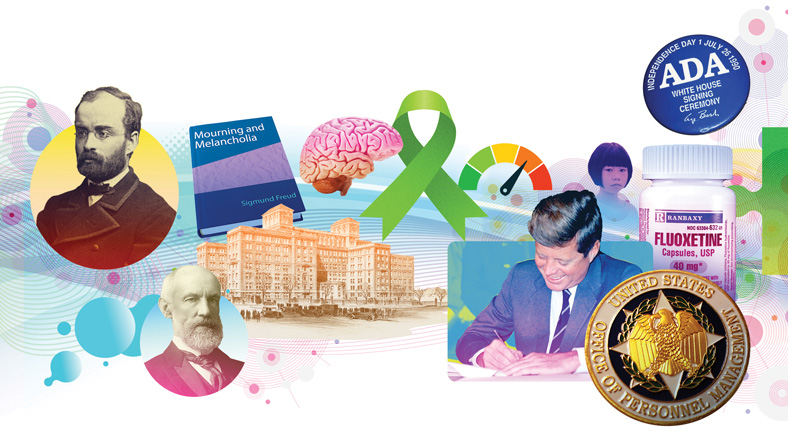
Half of all lifetime cases of mental illness emerge by age 14, according to the National Alliance on Mental Illness (NAMI). But the average delay between the onset of symptoms and intervention is nearly a decade.
Behavioral neuroscientist Katherine Grill, CAS/MA ’16, PhD ’17, aims to close that gap by meeting kids ages 11 and older where they are—on their phones. As CEO of Neolth, the app she cofounded with her husband in 2018, she is breaking down stigma around mental health issues and building resiliency and community by providing on-demand care that’s “personalized, accessible, and affordable.”
Neolth was developed with input from 400 youngsters. Like YouTube or TikTok, it features curated content about everything from bullying to breathwork that’s created and vetted by mental health professionals. The majority of users tap the app in search of support around a life transition like applying for college, but for those with anxiety or depression, “Neolth is a stepping stone to care,” says Grill, winner of AU’s 2023 Rising Star Award. “Help-seeking is a learned behavior, and we teach kids to ask for it, shortening the time it takes to get them into a doctor’s office from years to weeks.”
Winner of the World Economic Forum’s 2022 UpLink Youth Mental Health Challenge, Neolth also offers resources for educators and school counselors and continuous crisis monitoring.
According to NAMI, 20 percent of youth ages 13–18 are living with a mental health condition—a figure exacerbated by the pandemic. “This is a crisis,” says Grill, named to Forbes’s 30 Under 30 in 2022. “COVID might’ve pushed us over the edge, but we’ve been on this trajectory for 10 or 15 years.”
Technology, she hopes, is the key to getting kids back on a healthier, happier path.
Child and adolescent mental health: a timeline
1886: Danish neurologist Carl Lange is among the first to use “depression” to describe patients who manifest “a lack of spirits and joie de vivre as their constant complaint.”
1904: Psychologist Stanley Hall originates the term “adolescence,” noting that the transition from childhood to adulthood is marked by periods of “storm and stress.”
1917: Sigmund Freud, the founder of psychoanalysis, publishes Mourning and Melancholia. Written over several years, it reflects his own struggle with worry and grief.
1920: Twenty years after secondary schools begin offering vocational guidance, counselors adopt a more clinical approach to helping students with “personal adjustment” issues.
1923: The psychiatric division of Bellevue Hospital in New York City opens a children’s ward.
1935: Physician Leo Kanner’s Child Psychiatry—the first English language textbook on the subject—is published.
1946: President Harry Truman signs the National Mental Health Act. Three years later, the National Institute of Mental Health is established.
1949: The National Mental Health Association—born out of founder Clifford Beers’s battle with bipolar disorder—launches Mental Health Week. Today, Mental Health Awareness Month runs all of May.
1953: The American Academy of Child Psychiatry is founded with 107 charter members. Today, the American Academy of Child and Adolescent Psychology, which updated its name in 1988, boasts more than 10,000 members.
1959: Eleven years after it is first proposed, the American Board of Psychiatry and Neurology approves a subspeciality in child psychiatry, into which 160 clinicians are grandfathered.
1960: The Hamilton Rating Scale for Depression is introduced, followed a year later by the Beck Depression Inventory. Considered the gold standard, both are still in use today.
1963: The Community Mental Health Act, signed by President John F. Kennedy, authorizes grants for the construction of 173 mental health centers across the US by 1967.
1974: The US Civil Service Commission removes from federal government employment forms the question: Have you ever been mentally ill?
1988: Sixteen years after its discovery by Eli Lilly and Company, fluoxetine hits the market under the brand name Prozac. By 2020, it is the most widely prescribed selective serotonin reuptake inhibitor.
1990: President George H.W. Bush signs the landmark Americans with Disabilities Act, which includes protections for those living with mental illness.

1999: President Bill Clinton hosts the first White House Conference on Mental Health.
2003: The Food and Drug Administration approves Prozac as a treatment for depression and obsessive-compulsive disorder in children ages 7–17.
2013: In its first comprehensive report on children’s mental health in the US, the Centers for Disease Control and Prevention (CDC) finds that 2 percent of kids ages 3–17 experience depression and 3 percent have anxiety.
2016: According to a study by researchers from Duke University Medical Center, 24 percent of the first 37 presidents meet the diagnostic criteria for depression, including Abraham Lincoln.
2019: Virginia and Oregon become the first of 12 states to pass legislation allowing students to take excused mental health days.
2020: The 988 Suicide and Crisis Lifeline goes live in July, connecting people with round-the-clock care. It replaces the National Suicide Hotline’s 10-digit number and is available to 95 percent of cellphone customers.
Over the first seven months of the pandemic, mental health–related emergency room visits jump 24 percent for children ages 5–11 and 31 percent for those ages 12–27, compared to 2019.
Four months into the pandemic, former First Lady Michelle Obama admits she’s dealing with “some low-grade form of depression.” One in three Americans also report symptoms of depression and anxiety—up from 1 in 10 in 2019—according to the US Census Bureau.
2021: The American Rescue Plan Act allocates nearly $170 billion for K–12 schools, part of which is used to expand mental health services for students and educators.
2022: CDC reports a 200 percent increase in depression and a 300 percent jump in anxiety among kids ages 3–17 since it issued its 2013 report. Age and poverty level are the greatest predictors of whether the 8.5 million children with mental health issues receive treatment.